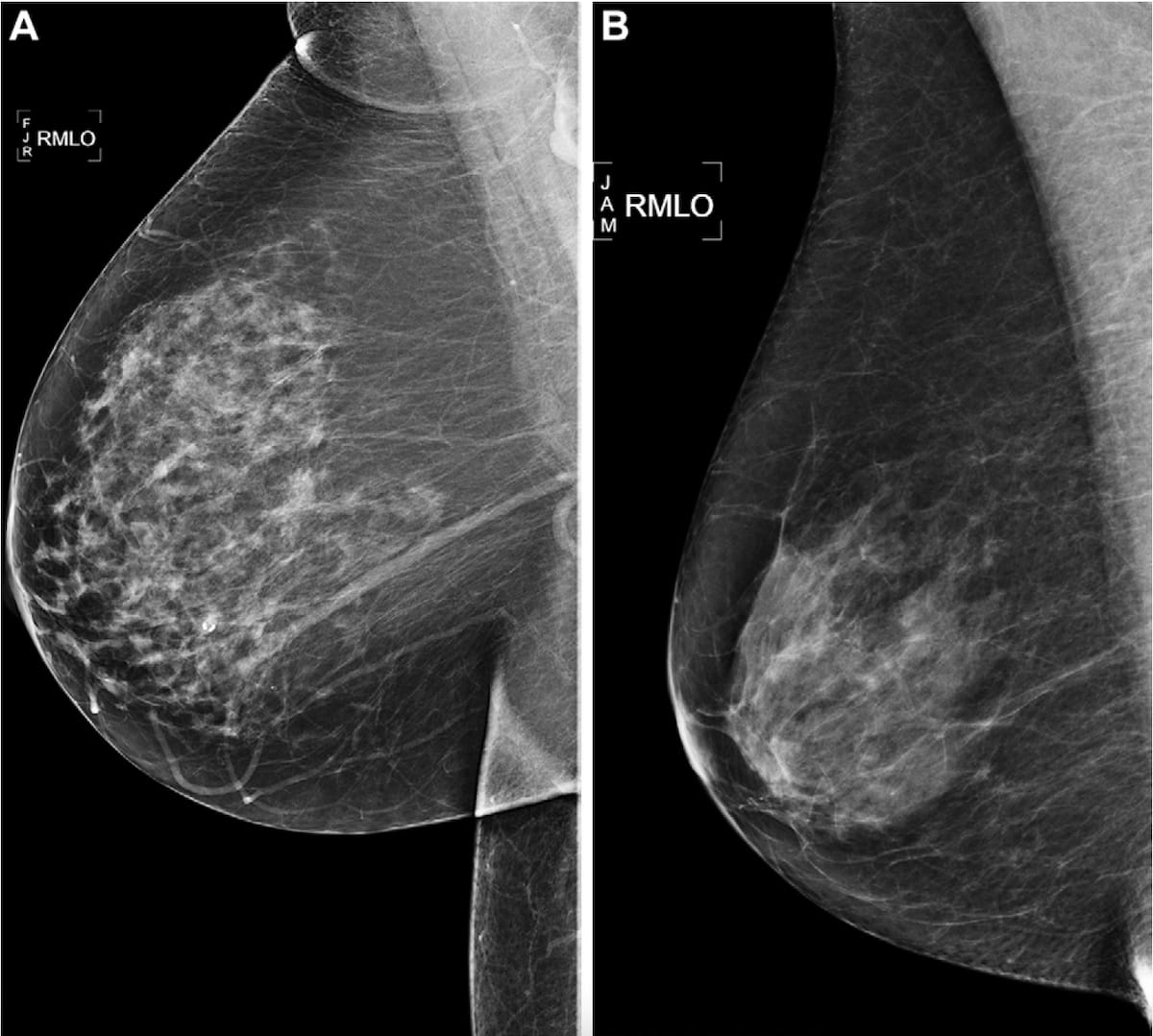Study Assesses Ability of Mammography AI Algorithms to Predict Breast Cancer Risk
Five artificial intelligence (AI) algorithms for mammography assessment were better at predicting breast cancer risk over five years than the Breast Cancer Surveillance Consortium (BCSC) risk model, according to new retrospective research involving over 13,000 women.
Can artificial intelligence (AI) provide better assessment of breast cancer risk than an established risk model that incorporates clinical factors, age, family history, breast density and other factors?
In a retrospective assessment of negative two-dimensional digital mammography exams from 13,628 women, five mammography AI algorithms consistently outperformed the Breast Cancer Surveillance Consortium (BCSC) risk model for predicting breast cancer risk over a five-year period.
For the study, recently published in Radiology, researchers compared the BCSC risk model to two academic AI mammography algorithms (Mirai (MIT) and Globally-Aware Multiple Instance Classifier (GMIC, New York University)) and three commercially available AI mammography algorithms including MammoScreen (Therapixel), ProFound AI (iCAD) and Mia (Kheiron Medical Technologies).
For incident cancer detection over a five-year period between 2016 to 2021, the BCSC risk model had a time-dependent area under the receiving operating characteristic curve (AUC) of 61 percent in comparison to AUCs ranging between 63 and 67 percent for the five AI mammography algorithms, according to the researchers.
The researchers also found the five AI mammography algorithms outperformed the BCSC risk model for interval cancer detection at one year. The interval cancer risk detection AUC for the AI algorithms ranged from 67 percent to a high of 71 percent for the MammoScreen and Mia AI models versus 62 percent for the BCSC risk model.
“Mammography AI algorithms provide an approach for improving breast cancer risk prediction beyond clinical variables such as age, family history, or the traditional imaging risk biomarker of breast density. The absolute increase in the AUC for the best mammography AI relative to BCSC was 0.09 for interval cancer risk and 0.06 for overall 5-year risk, a substantial and clinically meaningful improvement,” wrote lead study author Vignesh A. Arasu, M.D., Ph.D., an attending radiologist at the Vallejo Medical Center in Vallejo, Calif., and a research scientist within the Division of Research at Kaiser Permanente Northern California in Oakland, Calif.
Here one can see right medial lateral oblique screening mammograms. The left image revealed a negative mammogram finding and a Mirai AI risk score of greater than a 90 percentile risk in 2016 for a 73-year-old woman who developed breast cancer in 2021. The second image revealed a Mirai AI risk score of less than a 10 percentile risk in 2016 for a 73-year-old woman who did develop breast cancer during the five-year follow-up period. (Images courtesy of Radiology.)

(Editor’s note: For related content, see “Study: Emerging AI Platform for DBT Shows 23 Percent Increase in Breast Cancer Detection Rate,” “Digital Mammography Meta-Analysis Suggests AI Performs as Well as Radiologists” and “Study: AI Improves Cancer Detection Rate for Digital Mammography and Digital Breast Tomosynthesis.”)
The researchers also pointed out that all five mammography AI algorithms had consistently higher AUCs than the BCSC model for predicting breast cancer risk for every year of the five-year study period.
“Continued strong predictive performance at 1-5 years is surprising and suggests that AI is not only identifying missed cancers but may identify breast tissue features that help predict future cancer development,” noted Arasu and colleagues. “This is analogous to high breast density independently predicting both tissue masking and future cancer risk.”
In regard to study limitations, the study authors acknowledged numerous AI mammography algorithms beyond the five algorithms assessed in the study and noted the possibility of different results with those mammography AI algorithms. They also conceded a lack of information on missing family history in the retrospective data reviewed for the study.
Emerging AI Algorithm Shows Promise for Abbreviated Breast MRI in Multicenter Study
April 25th 2025An artificial intelligence algorithm for dynamic contrast-enhanced breast MRI offered a 93.9 percent AUC for breast cancer detection, and a 92.3 percent sensitivity in BI-RADS 3 cases, according to new research presented at the Society for Breast Imaging (SBI) conference.
Could AI-Powered Abbreviated MRI Reinvent Detection for Structural Abnormalities of the Knee?
April 24th 2025Employing deep learning image reconstruction, parallel imaging and multi-slice acceleration in a sub-five-minute 3T knee MRI, researchers noted 100 percent sensitivity and 99 percent specificity for anterior cruciate ligament (ACL) tears.
What is the Best Use of AI in CT Lung Cancer Screening?
April 18th 2025In comparison to radiologist assessment, the use of AI to pre-screen patients with low-dose CT lung cancer screening provided a 12 percent reduction in mean interpretation time with a slight increase in specificity and a slight decrease in the recall rate, according to new research.